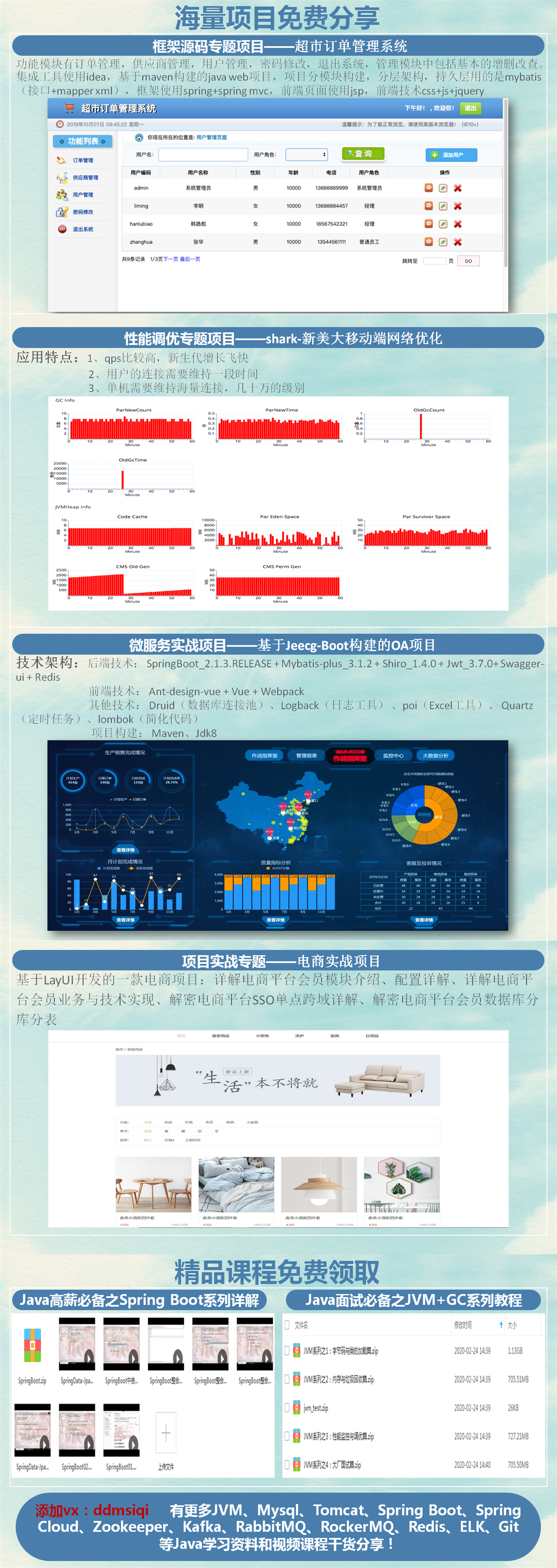通过使用Mongo和MySQL DB实现的示例,深入了解Spring Boot的@Conditional注释世界。
在我以前的文章“为什么选择Spring Boot?”中,我们讨论了如何创建Spring Boot应用程序,但是你可能了解也可能不了解幕后情况。 你可能想了解Spring Boot自动配置背后的魔力。
在此之前,你应该了解Spring的@Conditional功能,所有Spring Boot的AutoConfiguration魔术都依赖于此。
探索@Conditional的力量
在开发基于Spring的应用程序时,我们可能会遇到有条件地注册bean的需求。
例如,你可能想在本地运行应用程序时注册一个指向dev数据库的DataSource bean,而在生产环境中运行时则指向一个不同的生产数据库。
你可以将数据库连接参数外部化到属性文件中,并使用适合该环境的文件,但是每当需要指向其他环境并构建应用程序时,都需要更改配置。
为了解决这个问题,Spring 3.1引入了Profiles的概念。 你可以注册多个相同类型的bean,并将它们与一个或多个概要文件关联。 运行应用程序时,你可以激活所需的配置文件以及与已激活的配置文件相关联的Bean,并且只有那些配置文件将被注册。
1 @Configuration 2 public class AppConfig 3 { 4 @Bean 5 @Profile("DEV") 6 public DataSource devDataSource() { 7 ... 8 } 9 @Bean 10 @Profile("PROD") 11 public DataSource prodDataSource() { 12 ... 13 } 14 }
然后,你可以使用系统属性-Dspring.profiles.active=DEV指定活动配置文件。
这种方法适用于简单情况,例如根据已激活的配置文件启用或禁用bean注册。但是,如果你要基于某些条件逻辑来注册bean,那么概要文件方法本身是不够的。
为了为有条件地注册Spring Bean提供更大的灵活性,Spring 4引入了@Conditional的概念。通过使用@Conditional方法,你可以根据任意条件有条件地注册bean。
例如,在以下情况下,你可能想要注册一个bean:
- 类路径中存在特定的类
- 某些类型的Spring bean尚未在ApplicationContext中注册
- 某个位置上存在特定文件
- 在配置文件中配置了特定的属性值
- 存在/不存在特定的系统属性
这些仅是几个示例,你可以具有所需的任何条件。
让我们看一下Spring的@Conditional的工作原理。
假设我们有一个UserDAO接口,其中包含从数据存储中获取数据的方法。我们有两种UserDAO接口的实现,即与MySQL数据库对话的JdbcUserDAO和与MongoDB对话的MongoUserDAO。
我们可能只想基于系统属性(即dbType)启用JdbcUserDAO和MongoUserDAO的一个接口。
如果使用java -jar myapp.jar -DdbType = MySQL启动应用程序,那么我们要启用JdbcUserDAO。否则,如果使用java -jar myapp.jar -DdbType = MONGO启动了应用程序,则我们要启用MongoUserDAO。
假设我们有一个UserDAO bean和一个JdbcUserDAO bean。 MongoUserDAO实现如下:
1 public interface UserDAO 2 { 3 List<String> getAllUserNames(); 4 } 5 public class JdbcUserDAO implements UserDAO 6 { 7 @Override 8 public List<String> getAllUserNames() 9 { 10 System.out.println("**** Getting usernames from RDBMS *****"); 11 return Arrays.asList("Siva","Prasad","Reddy"); 12 } 13 } 14 public class MongoUserDAO implements UserDAO 15 { 16 @Override 17 public List<String> getAllUserNames() 18 { 19 System.out.println("**** Getting usernames from MongoDB *****"); 20 return Arrays.asList("Bond","James","Bond"); 21 } 22 }
我们可以实现条件MySQLDatabaseTypeCondition来检查系统属性dbType是否为“ MYSQL”,如下所示:
1 public class MySQLDatabaseTypeCondition implements Condition 2 { 3 @Override 4 public boolean matches(ConditionContext conditionContext, AnnotatedTypeMetadata metadata) 5 { 6 String enabledDBType = System.getProperty("dbType"); 7 return (enabledDBType != null && enabledDBType.equalsIgnoreCase("MYSQL")); 8 } 9 }
我们可以实现条件MongoDBDatabaseTypeCondition来检查系统属性dbType是否为“ MONGODB”,如下所示:
1 public class MongoDBDatabaseTypeCondition implements Condition 2 { 3 @Override 4 public boolean matches(ConditionContext conditionContext, AnnotatedTypeMetadata metadata) 5 { 6 String enabledDBType = System.getProperty("dbType"); 7 return (enabledDBType != null && enabledDBType.equalsIgnoreCase("MONGODB")); 8 } 9 }
现在,我们可以使用@Conditional有条件地配置JdbcUserDAO和MongoUserDAO Bean,如下所示:
1 @Configuration 2 public class AppConfig 3 { 4 @Bean 5 @Conditional(MySQLDatabaseTypeCondition.class) 6 public UserDAO jdbcUserDAO(){ 7 return new JdbcUserDAO(); 8 } 9 @Bean 10 @Conditional(MongoDBDatabaseTypeCondition.class) 11 public UserDAO mongoUserDAO(){ 12 return new MongoUserDAO(); 13 } 14 }
如果运行类似java -jar myapp.jar -DdbType = MYSQL的应用程序,则仅会注册JdbcUserDAO Bean。但是,如果将系统属性设置为-DdbType = MONGODB,则只会注册MongoUserDAO Bean。
现在,我们已经看到了如何基于系统属性有条件地注册bean。
假设仅当classpath上有MongoDB Java驱动程序类“ com.mongodb.Server”可用时,我们才想注册MongoUserDAO Bean,否则,我们希望注册JdbcUserDAO Bean。
为此,我们可以创建条件来检查MongoDB驱动程序类“ com.mongodb.Server”的存在与否,如下所示:
1 public class MongoDriverPresentsCondition implements Condition 2 { 3 @Override 4 public boolean matches(ConditionContext conditionContext,AnnotatedTypeMetadata metadata) 5 { 6 try { 7 Class.forName("com.mongodb.Server"); 8 return true; 9 } catch (ClassNotFoundException e) { 10 return false; 11 } 12 } 13 } 14 public class MongoDriverNotPresentsCondition implements Condition 15 { 16 @Override 17 public boolean matches(ConditionContext conditionContext, AnnotatedTypeMetadata metadata) 18 { 19 try { 20 Class.forName("com.mongodb.Server"); 21 return false; 22 } catch (ClassNotFoundException e) { 23 return true; 24 } 25 } 26 }
我们刚刚看到了如何根据类路径中是否存在类来有条件地注册bean。
如果仅当尚未注册其他类型为UserDAO的Spring Bean时才想注册MongoUserDAO Bean,该怎么办?
我们可以创建一个条件来检查是否存在某种特定类型的现有bean,如下所示:
1 public class UserDAOBeanNotPresentsCondition implements Condition 2 { 3 @Override 4 public boolean matches(ConditionContext conditionContext, AnnotatedTypeMetadata metadata) 5 { 6 UserDAO userDAO = conditionContext.getBeanFactory().getBean(UserDAO.class); 7 return (userDAO == null); 8 } 9 }
如果仅在属性占位符配置文件中设置属性app.dbType = MONGO时才想注册MongoUserDAO bean,该怎么办?
我们可以如下实现该条件:
1 public class MongoDbTypePropertyCondition implements Condition 2 { 3 @Override 4 public boolean matches(ConditionContext conditionContext, 5 AnnotatedTypeMetadata metadata) 6 { 7 String dbType = conditionContext.getEnvironment() 8 .getProperty("app.dbType"); 9 return "MONGO".equalsIgnoreCase(dbType); 10 } 11 }
我们刚刚看到了如何实现各种类型的条件,但是还有使用注释来实现条件的更优雅的方法。 代替为MYSQL和MongoDB创建Condition实现,我们可以创建如下的DatabaseType批注:
1 @Target({ ElementType.TYPE, ElementType.METHOD }) 2 @Retention(RetentionPolicy.RUNTIME) 3 @Conditional(DatabaseTypeCondition.class) 4 public @interface DatabaseType 5 { 6 String value(); 7 }
然后,我们可以实现DatabaseTypeCondition以使用DatabaseType值来确定是启用还是禁用bean注册,如下所示:
1 public class DatabaseTypeCondition implements Condition 2 { 3 @Override 4 public boolean matches(ConditionContext conditionContext, 5 AnnotatedTypeMetadata metadata) 6 { 7 Map<String, Object> attributes = metadata.getAnnotationAttributes(DatabaseType.class.getName()); 8 String type = (String) attributes.get("value"); 9 String enabledDBType = System.getProperty("dbType","MYSQL"); 10 return (enabledDBType != null && type != null && enabledDBType.equalsIgnoreCase(type)); 11 } 12 }
现在,我们可以在bean定义上使用@DatabaseType批注,如下所示:
1 @Configuration 2 @ComponentScan 3 public class AppConfig 4 { 5 @DatabaseType("MYSQL") 6 public UserDAO jdbcUserDAO(){ 7 return new JdbcUserDAO(); 8 } 9 @Bean 10 @DatabaseType("MONGO") 11 public UserDAO mongoUserDAO(){ 12 return new MongoUserDAO(); 13 } 14 }
在这里,我们从DatabaseType批注中获取元数据,并对照System Property dbType值进行检查,以确定是启用还是禁用Bean注册。
我们已经看到了很多示例,以了解如何使用@Conditional批注有条件地注册bean。
Spring Boot广泛使用@Conditional功能根据各种条件有条件地注册bean。
你可以在spring-boot-autoconfigure- {version} .jar的org.springframework.boot.autoconfigure包中找到SpringBoot使用的各种Condition实现。
现在我们已经知道了Spring Boot如何使用@Conditional功能有条件地检查是否注册Bean,但是究竟是什么触发了自动配置机制呢?
这就是我们将在下一部分中讨论的内容。
Spring Boot自动配置
Spring Boot自动配置魔术的关键是@EnableAutoConfiguration批注。通常,我们使用@SpringBootApplication注释应用程序入口点类,或者,如果要自定义默认值,可以使用以下注释:
1 @Configuration 2 @EnableAutoConfiguration 3 @ComponentScan 4 public class Application 5 { 6 }
@EnableAutoConfiguration批注通过扫描类路径组件并注册与各种条件匹配的bean来启用Spring ApplicationContext的自动配置。
SpringBoot在spring-boot-autoconfigure- {version} .jar中提供了各种AutoConfiguration类,这些类负责注册各种组件。
通常,AutoConfiguration类使用@Configuration注释,以将其标记为Spring配置类,并使用@EnableConfigurationProperties注释,以绑定定制属性和一个或多个条件Bean注册方法。
例如,考虑org.springframework.boot.autoconfigure.jdbc.DataSourceAutoConfiguration类。
1 @Configuration 2 @ConditionalOnClass({ DataSource.class, EmbeddedDatabaseType.class }) 3 @EnableConfigurationProperties(DataSourceProperties.class) 4 @Import({ Registrar.class, DataSourcePoolMetadataProvidersConfiguration.class }) 5 public class DataSourceAutoConfiguration 6 { 7 ... 8 ... 9 @Conditional(DataSourceAutoConfiguration.EmbeddedDataSourceCondition.class) 10 @ConditionalOnMissingBean({ DataSource.class, XADataSource.class }) 11 @Import(EmbeddedDataSourceConfiguration.class) 12 protected static class EmbeddedConfiguration { 13 } 14 @Configuration 15 @ConditionalOnMissingBean(DataSourceInitializer.class) 16 protected static class DataSourceInitializerConfiguration { 17 @Bean 18 public DataSourceInitializer dataSourceInitializer() { 19 return new DataSourceInitializer(); 20 } 21 } 22 @Conditional(DataSourceAutoConfiguration.NonEmbeddedDataSourceCondition.class) 23 @ConditionalOnMissingBean({ DataSource.class, XADataSource.class }) 24 protected static class NonEmbeddedConfiguration { 25 @Autowired 26 private DataSourceProperties properties; 27 @Bean 28 @ConfigurationProperties(prefix = DataSourceProperties.PREFIX) 29 public DataSource dataSource() { 30 DataSourceBuilder factory = DataSourceBuilder 31 .create(this.properties.getClassLoader()) 32 .driverClassName(this.properties.getDriverClassName()) 33 .url(this.properties.getUrl()).username(this.properties.getUsername()) 34 .password(this.properties.getPassword()); 35 if (this.properties.getType() != null) { 36 factory.type(this.properties.getType()); 37 } 38 return factory.build(); 39 } 40 } 41 ... 42 ... 43 @Configuration 44 @ConditionalOnProperty(prefix = "spring.datasource", name = "jmx-enabled") 45 @ConditionalOnClass(name = "org.apache.tomcat.jdbc.pool.DataSourceProxy") 46 @Conditional(DataSourceAutoConfiguration.DataSourceAvailableCondition.class) 47 @ConditionalOnMissingBean(name = "dataSourceMBean") 48 protected static class TomcatDataSourceJmxConfiguration { 49 @Bean 50 public Object dataSourceMBean(DataSource dataSource) { 51 .... 52 .... 53 } 54 } 55 ... 56 ... 57 }
在这里,DataSourceAutoConfiguration带有@ConditionalOnClass({DataSource.class,EmbeddedDatabaseType.class})注释,这意味着仅当在类路径上有DataSource.class和EmbeddedDatabaseType.class类时,才会考虑DataSourceAutoConfiguration中的bean的AutoConfiguration。
该类还带有@EnableConfigurationProperties(DataSourceProperties.class)批注,该启用了自动将application.properties中的属性绑定到DataSourceProperties类的属性的功能。
1 @ConfigurationProperties(prefix = DataSourceProperties.PREFIX) 2 public class DataSourceProperties implements BeanClassLoaderAware, EnvironmentAware, InitializingBean { 3 public static final String PREFIX = "spring.datasource"; 4 ... 5 ... 6 private String driverClassName; 7 private String url; 8 private String username; 9 private String password; 10 ... 11 //setters and getters 12 }
使用此配置,所有以spring.datasource.*开头的属性都将自动绑定到DataSourceProperties对象。
1 spring.datasource.url=jdbc:mysql://localhost:3306/test 2 spring.datasource.username=root 3 spring.datasource.password=secret 4 spring.datasource.driver-class-name=com.mysql.jdbc.Driver
你还可以看到一些内部类和bean定义方法,这些内部类和bean定义方法用SpringBoot的条件注释(例如@ ConditionalOnMissingBean,@ ConditionalOnClass和@ConditionalOnProperty等)进行注释。
仅当这些条件匹配时,这些Bean定义才会在ApplicationContext中注册。
你还可以在spring-boot-autoconfigure- {version} .jar中探索许多其他AutoConfiguration类,例如:
- org.springframework.boot.autoconfigure.web.DispatcherServletAutoConfiguration
- org.springframework.boot.autoconfigure.orm.jpa.HibernateJpaAutoConfiguration
- org.springframework.boot.autoconfigure.data.jpa.JpaRepositoriesAutoConfiguration
- org.springframework.boot.autoconfigure.jackson.JacksonAutoConfigurationetc etc.
我希望你现在可以通过使用各种AutoConfiration类以及@Conditional功能来了解Spring Boot自动配置的工作方式。
感谢阅读!





